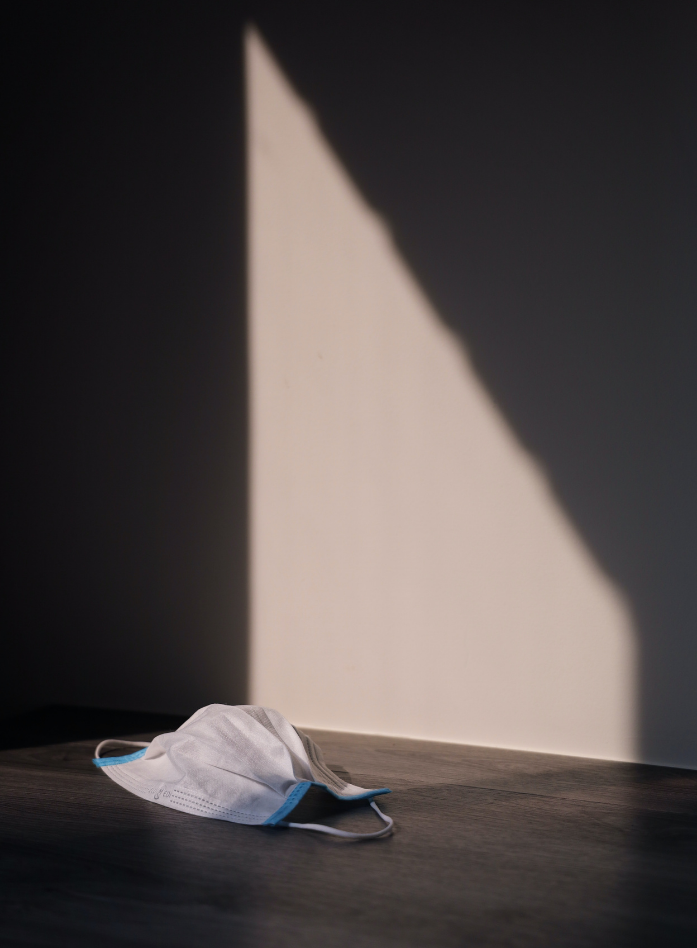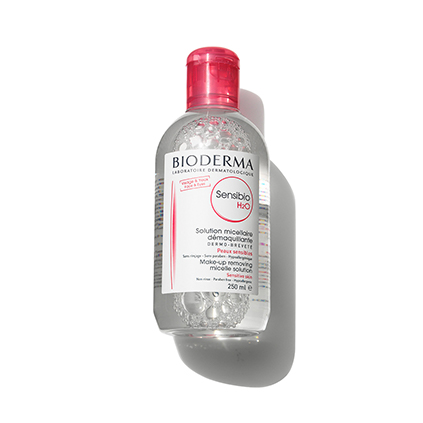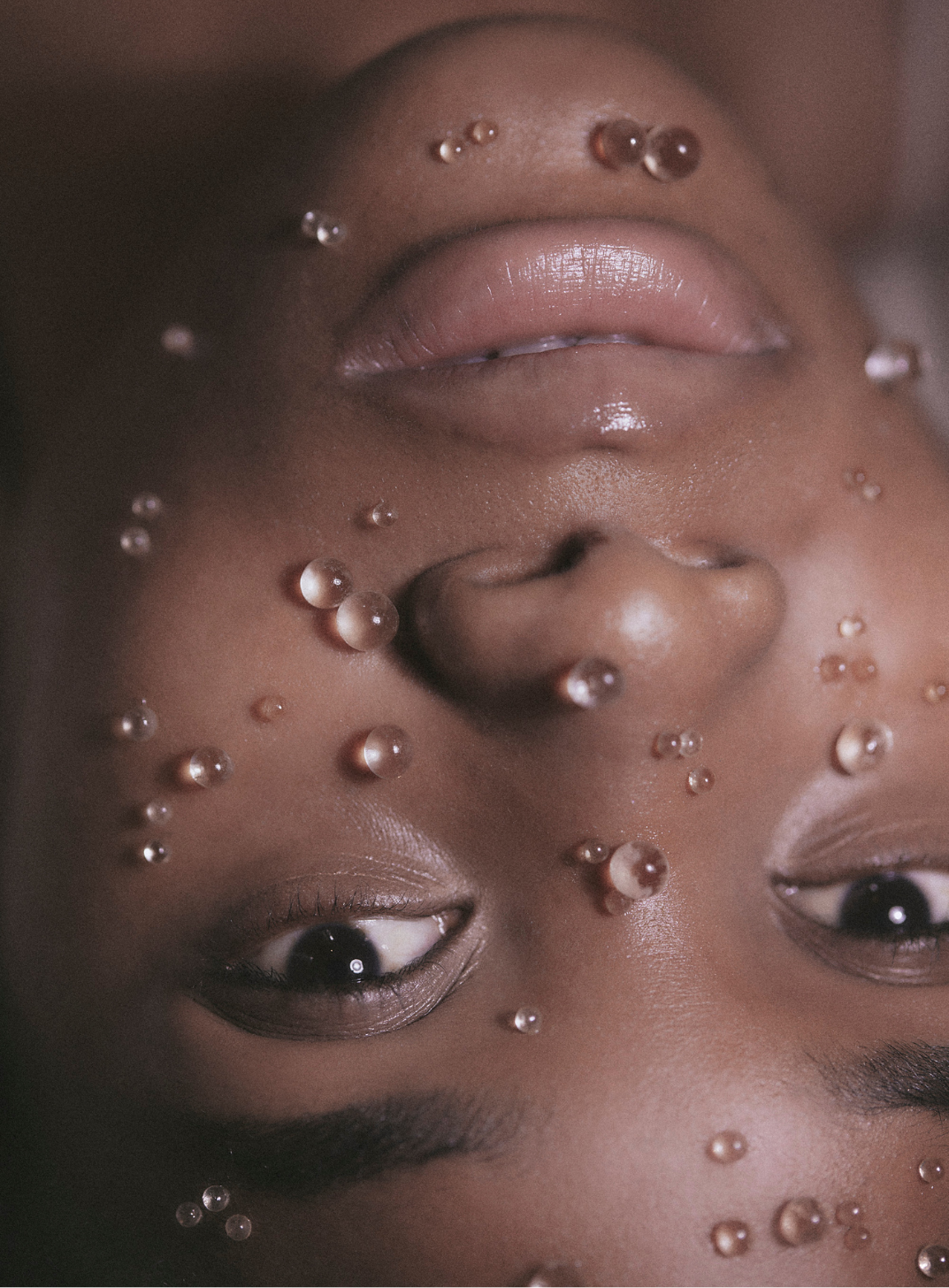How To Protect Your Skin From Maskne
Protect your skin while protecting our community.
Just like making sure you have your wallet and keys when leaving the house, a protective face mask has become an essential part of any outing. An integral part to protecting yourself, your loved ones and our community, masks do a lot of good. But, unfortunately, they can also wreak havoc on your delicate skin.
If you’ve noticed that since you’ve been wearing a mask regularly, your skin has been reactive, temperamental and crankier than usual, it’s likely that you’re suffering from maskne (mask acne). A term coined in 2020 to describe the acne related to consistently covering the lower half of your face, maskne is arguably one of the most difficult skin conditions to treat. Why? Well, you can’t remove the cause. But luckily for us, we’ve enlisted the help of dermatologist Dr Michelle Rodrigues to breakdown the products and practices we can implement to help prevent it as much as possible.
What Exactly Is Maskne?
Before we can get into preventing and treating maskne, it’s important to understand exactly what it is and how it differs to other acne you may experience from time to time. “Maskne is defined as the onset of acne within six weeks of starting to wear a face mask regularly or the exacerbation of acne over the masked area,” says Dr Rodrigues. “It is caused by the blocking of the hair follicles from mechanical stress (pressure, occlusion, friction) and altered skin conditions (like changes in heat, pH, the skin microbiome and moisture build up).”
How can you tell that it’s maskne and not just hormonal acne? Dr Rodrigues says that it will usually arise within six weeks of regular mask wearing. “It’s also usually located around the cheeks and chin and doesn’t fluctuate with menstrual cycles,” she says. “Hormonal acne is usually seen around the chin, jawline and sometimes even the neck.”
How Can You Prevent Maskne?
As with most skin issues, prevention is key. Particularly when discussing acne, it’s always easier to prevent than it is to treat. Dr Rodrigues recommends getting as much ‘mask-free’ time as possible (safely, of course) and avoiding wearing heavy makeup underneath your mask.
“I would also recommend avoiding hot drinks and foods just before popping on your mask and this increases heat and moisture on the skin covered by the mask which can increase the chances of a pimple popping up under it,” she says. “It also goes without saying to make sure you’re washing your reusable mask regularly and only using a disposable mask once.”
How Can You Treat Maskne?
For many of us, it has only been in the last month or so that we have noticed our skin playing up. So, if you weren’t preemptive enough to get on top of it before the pesky bumps began to show, 1) you’re not alone and 2) the good news is that there are treatment options available!
The increase in friction, moisture and heat all contribute to a compromised skin barrier that is unable to properly protect itself. As such, stripping back your routine to the basics and focusing on replenishing the skin is vital to recovering from maskne. “The best skincare products to manage maskne include a great gentle, soap-free, ceramide cleanser and a ceramide-rich moisturising lotion,” says Dr Rodrigues. Our favourites hail from CeraVe and La Roche Posay. “I would also recommend a niacinamide skin defence serum in the morning as this will kick start the protective properties of your skin barrier to help prevent further acne.”
If, however, you’re maskne is persisting, it is always best to seek professional advice from your dermatologist. Not only can they provide additional, individually tailored advice but they can also provide a number of effective and safe prescription medications if necessary. You know your skin better than anyone, so if something doesn’t seem right, it’s always best to seek advice from the professionals.
Sayonara maskne! You will not be missed.
How To Protect Your Skin From Maskne
Protect your skin while protecting our community.
Just like making sure you have your wallet and keys when leaving the house, a protective face mask has become an essential part of any outing. An integral part to protecting yourself, your loved ones and our community, masks do a lot of good. But, unfortunately, they can also wreak havoc on your delicate skin.
If you’ve noticed that since you’ve been wearing a mask regularly, your skin has been reactive, temperamental and crankier than usual, it’s likely that you’re suffering from maskne (mask acne). A term coined in 2020 to describe the acne related to consistently covering the lower half of your face, maskne is arguably one of the most difficult skin conditions to treat. Why? Well, you can’t remove the cause. But luckily for us, we’ve enlisted the help of dermatologist Dr Michelle Rodrigues to breakdown the products and practices we can implement to help prevent it as much as possible.
What Exactly Is Maskne?
Before we can get into preventing and treating maskne, it’s important to understand exactly what it is and how it differs to other acne you may experience from time to time. “Maskne is defined as the onset of acne within six weeks of starting to wear a face mask regularly or the exacerbation of acne over the masked area,” says Dr Rodrigues. “It is caused by the blocking of the hair follicles from mechanical stress (pressure, occlusion, friction) and altered skin conditions (like changes in heat, pH, the skin microbiome and moisture build up).”
How can you tell that it’s maskne and not just hormonal acne? Dr Rodrigues says that it will usually arise within six weeks of regular mask wearing. “It’s also usually located around the cheeks and chin and doesn’t fluctuate with menstrual cycles,” she says. “Hormonal acne is usually seen around the chin, jawline and sometimes even the neck.”
How Can You Prevent Maskne?
As with most skin issues, prevention is key. Particularly when discussing acne, it’s always easier to prevent than it is to treat. Dr Rodrigues recommends getting as much ‘mask-free’ time as possible (safely, of course) and avoiding wearing heavy makeup underneath your mask.
“I would also recommend avoiding hot drinks and foods just before popping on your mask and this increases heat and moisture on the skin covered by the mask which can increase the chances of a pimple popping up under it,” she says. “It also goes without saying to make sure you’re washing your reusable mask regularly and only using a disposable mask once.”
How Can You Treat Maskne?
For many of us, it has only been in the last month or so that we have noticed our skin playing up. So, if you weren’t preemptive enough to get on top of it before the pesky bumps began to show, 1) you’re not alone and 2) the good news is that there are treatment options available!
The increase in friction, moisture and heat all contribute to a compromised skin barrier that is unable to properly protect itself. As such, stripping back your routine to the basics and focusing on replenishing the skin is vital to recovering from maskne. “The best skincare products to manage maskne include a great gentle, soap-free, ceramide cleanser and a ceramide-rich moisturising lotion,” says Dr Rodrigues. Our favourites hail from CeraVe and La Roche Posay. “I would also recommend a niacinamide skin defence serum in the morning as this will kick start the protective properties of your skin barrier to help prevent further acne.”
If, however, you’re maskne is persisting, it is always best to seek professional advice from your dermatologist. Not only can they provide additional, individually tailored advice but they can also provide a number of effective and safe prescription medications if necessary. You know your skin better than anyone, so if something doesn’t seem right, it’s always best to seek advice from the professionals.
Sayonara maskne! You will not be missed.


















Comments